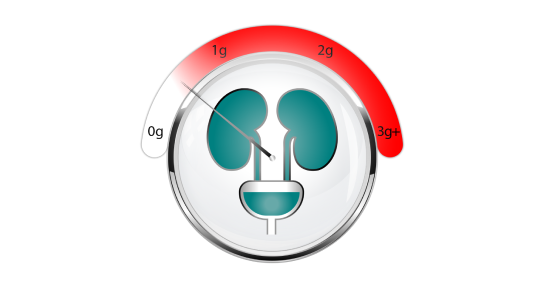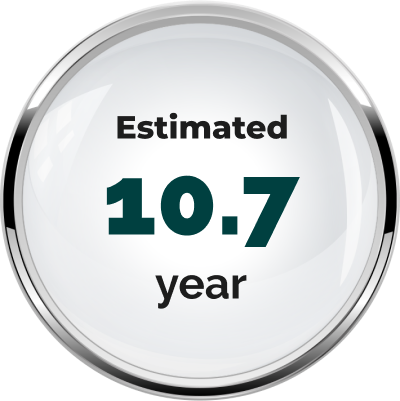In IgAN:
Each incremental gram per day above 1g results in a 10- to 25-fold faster rate of decline in kidney function and survival6
Proteinuria is primarily associated with a progressive loss of kidney function leading to kidney failure.5,9 The pathophysiologic link between proteinuria and progressively declining kidney function is complex, however there is evidence to suggest that tubular epithelial cells play a central role4

Induction of tubular chemokine expression and complement activation, leading to inflammatory interstitial cell infiltration and sustained fibrogenesis1,4,5,7,8

Activated angiotensin II (ANG II) produces vasoactive, inflammatory, and profibrotic cytokines, including the vasoconstrictor, endothelin-1
(ET-1)4,7,8

Disease progression is accelerated by a cycle of inflammation and activated tubular response, leading to tubular damage/apoptosis, podocyte damage, and ultimately interstitial fibrosis4,8

High proteinuria and declining eGFR are associated with an increased risk of disease progression in IgAN2,3
Higher proteinuria levels are associated with a faster decline in eGFR;3,5 conversely, patients within normal proteinuria levels show a slower decline in eGFR2
Proteinuria is a modifiable risk factor: the more it is reduced, the greater the protective effect against decline in kidney function to ESKD1,4–6,10–16

delay in the median time to kidney failure14
In IgAN, 30% reduction in proteinuria is estimated to reduce risk for ESKD by 50%, which is consequently estimated to increase the median time to ESKD. The median time to ESKD or eGFR <15mL/min/1.73m2 was extended in this model from 12.4 years to 23.1 years14